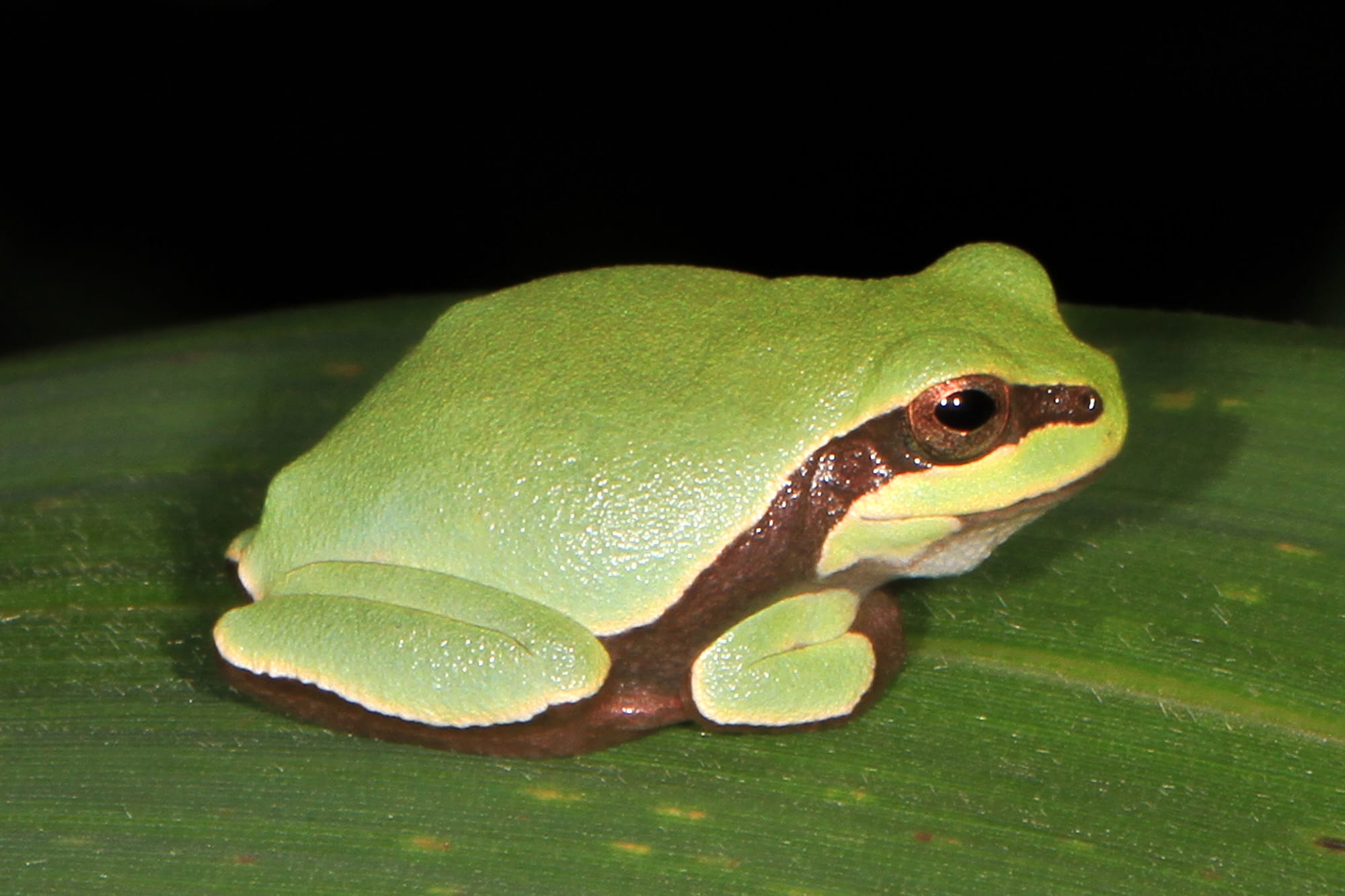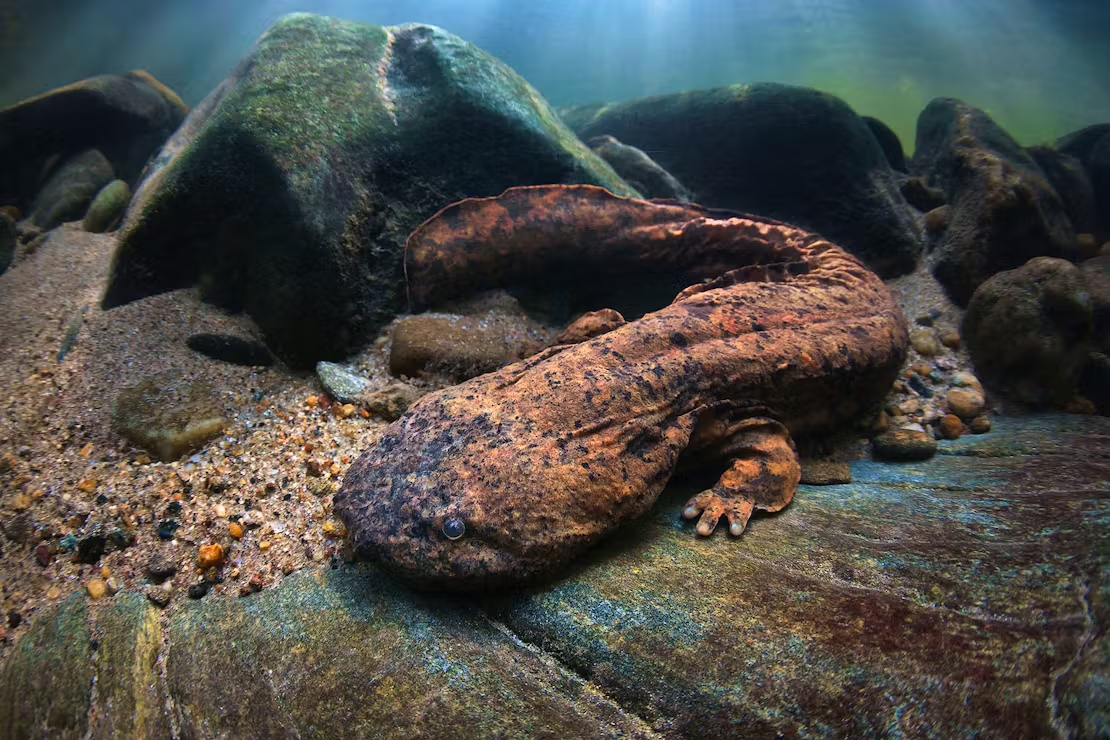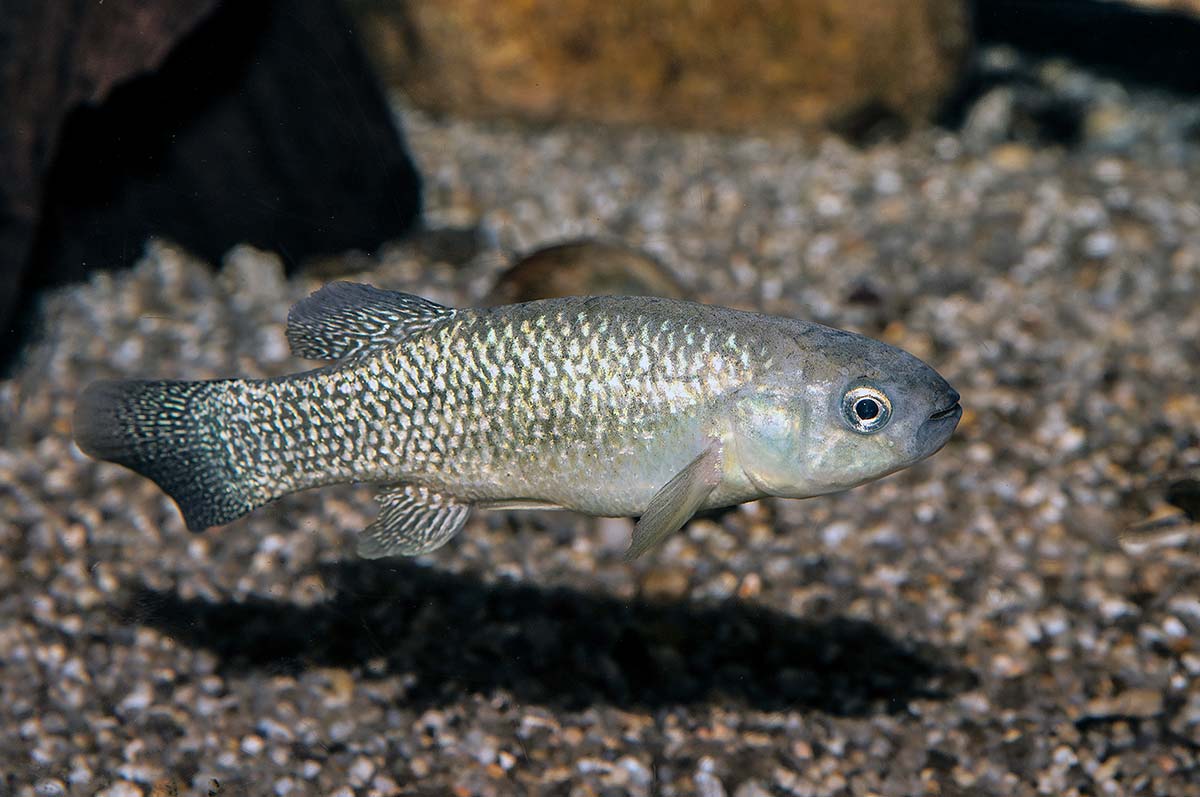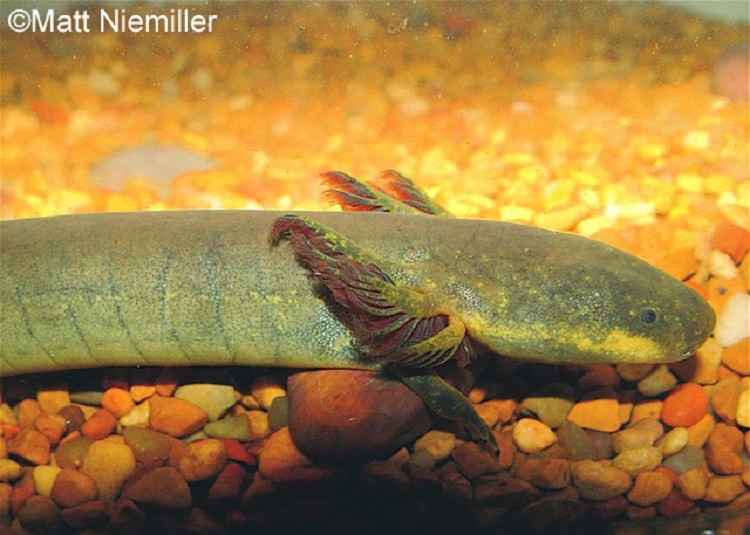Pine Barrens Treefrog
August 10, 2025

The Pine Barrens Treefrog, scientifically known as Hyla andersonii, is a unique amphibian found in the acidic, sandy wetlands of North Carolina’s coastal plain. This colorful frog is part of the Hylidae family and is known for its bright green body with distinct white or yellow stripes on its sides. Adults typically grow to about 1.5 to 2 inches in length. Pine Barrens Treefrogs breed in shallow, temporary pools during spring and early summer, relying on clean, undisturbed wetlands to survive. They are a sensitive species, making them important indicators of wetland health here in NC.
Eastern Hellbender
August 11, 2025

The Eastern Hellbender (Cryptobranchus alleganiensis alleganiensis) is one of the largest aquatic salamanders in North America and a fascinating bottom-dweller native to North Carolina’s clear, fast-flowing streams and rivers. Belonging to the Cryptobranchidae family, these salamanders can grow up to 29 inches long! They breathe through their skin and have loose folds along their sides that increase oxygen absorption. Hellbenders feed mainly on crayfish and small fish and live in rocky streambeds where they hide under large stones. They are shy, nocturnal creatures that are vital for maintaining healthy freshwater ecosystems in NC.
Mummichog
August 12, 2025

The Mummichog, or Fundulus heteroclitus, is a tough little fish found in the salt marshes and estuaries all along North Carolina’s coast. It belongs to the Fundulidae family and is known for its remarkable ability to survive in a variety of harsh conditions, including low oxygen and changing salinity. Mummichogs typically grow to about 4-6 inches long and feed on small invertebrates and detritus from the bottom of shallow waters. They’re a key bottom-dweller species that supports many coastal food webs, making them an important part of NC’s unique aquatic habitats.
Lesser Siren
August 15, 2025

The Lesser Siren (Siren intermedia) is an eel-like, fully aquatic salamander (not a fish!) that lives throughout North Carolina’s Coastal Plain in swamps, marshes, cypress-tupelo sloughs, ponds, and even roadside ditches. Belonging to the Sirenidae family, it keeps feathery external gills and has only two small front legs—perfect adaptations for life in slow, vegetated waters with low oxygen. Lesser sirens typically reach 7–20 inches, are mostly nocturnal, and feed on insect larvae, small crustaceans, snails, worms, and tadpoles. When wetlands dry, they can burrow into the mud and “aestivate,” forming a mucus cocoon to survive drought. In the wild, they’re found from the Albemarle and Pamlico wetlands to the blackwater creeks of the southeast coast.The North Carolina Aquarium at Pine Knoll Shores and the North Carolina Aquarium on Roanoke Island both feature live Lesser Sirens in their freshwater exhibits. As both predator and prey, they help control invertebrate populations and transfer energy up the food web, making them a quiet but essential part of NC’s freshwater and wetland ecosystems.
Leave a Comment